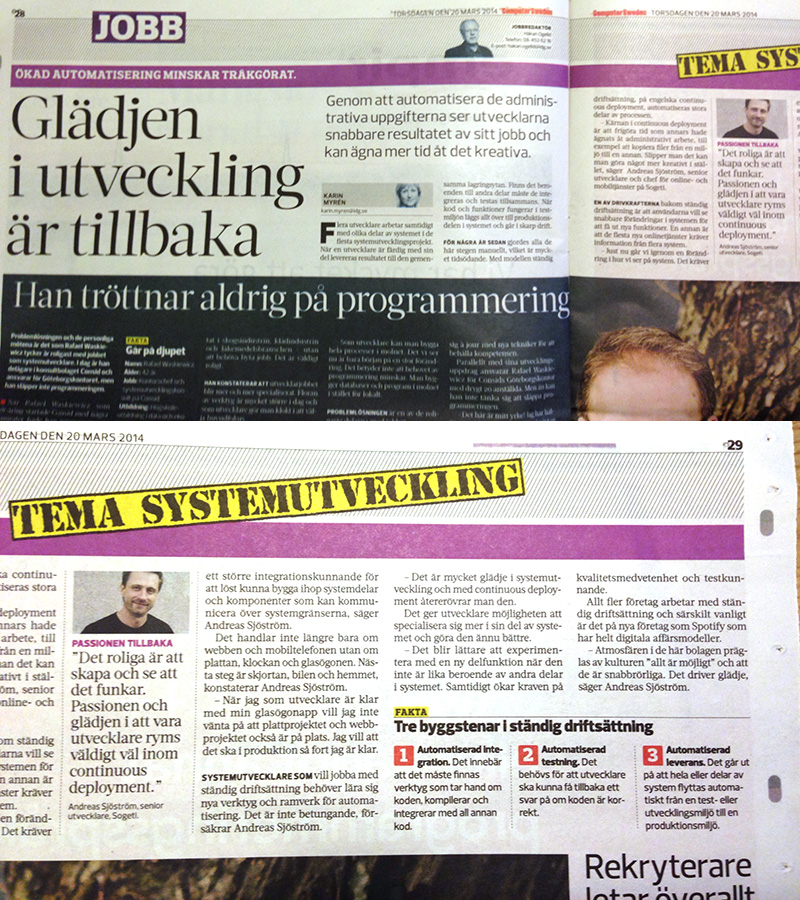Continuous deployment
In last Friday’s issue of Computer Sweden, I was interviewed about development aspects of continuous deployment. I told the reporter that I think that automation across configuration management, delivery from development through test to production, really brings joy and happiness back to development.
The heading of the article is: “Happiness in development is back” (the link takes you to the article in Swedish). A rough translation is below.
By automating the administrative tasks, developers see faster results of their efforts and can spend more time for that which is creative.
”It’s the creative work which is fascinating. The passion and joy in being a developer is well incorporated into continuous deployment”, says Andreas Sjostrom, senior developer at Sogeti. Several developers work at the same time on different parts of the solution in most projects. When a developer is finished with his/her part of a delivery, it’s delivered to a central repository. If there are any dependencies to other parts, then those have to be integrated and tested together. When code and functions work in the test environment, everything is moved into production.
A few years ago, these steps were managed manually, which is highly time consuming. Using continuous deployment, large portions of the process are automated.
– The core of continuous deployment is to save time which would have been spent in administrative work. Now you can do more creative work instead, says Andreas Sjostrom, senior developer and director of Sogeti’s online and mobile services.
One of the drivers behind continuous deployment is that users want to see changes more rapidly delivered. Another is that most new online services require information from several systems.
– We are in the process of changing the perception of systems. It requires deeper integration capabilities to loosely connect parts of systems and components that can communicate across system borders, says Andreas Sjostrom.
It’s no longer just about the web and the phone, but about the tablet, the watch and your glasses. The next step is your shirt, your car and home, says Andreas Sjostrom.
– When I, as a developer, am finished with my glasses app, I don’t want to wait for the tablet project and the web project to finish. I want it into production as soon as I am finished. Developers that want to work with continuous deployment need to learn new tools and frameworks for automation. It’s not a burden, ensures Andreas Sjostrom
– It’s a lot of happiness in development and with continuous deployment you return back to joy. It gives developers the opportunity to specialize more into their parts of the solution, further improving them. It becomes easier to experiment with a sub-function when it is not as dependent of other parts in the system. At the same time, the demands of quality assurance and test capabilities increase.
– More and more companies embrace continuous deployment and it’s common place at new digital companies such as Spotify. The atmosphere in these companies by the culture that anything is possible and agility. That drives happiness and joy, says Andreas Sjostrom.

